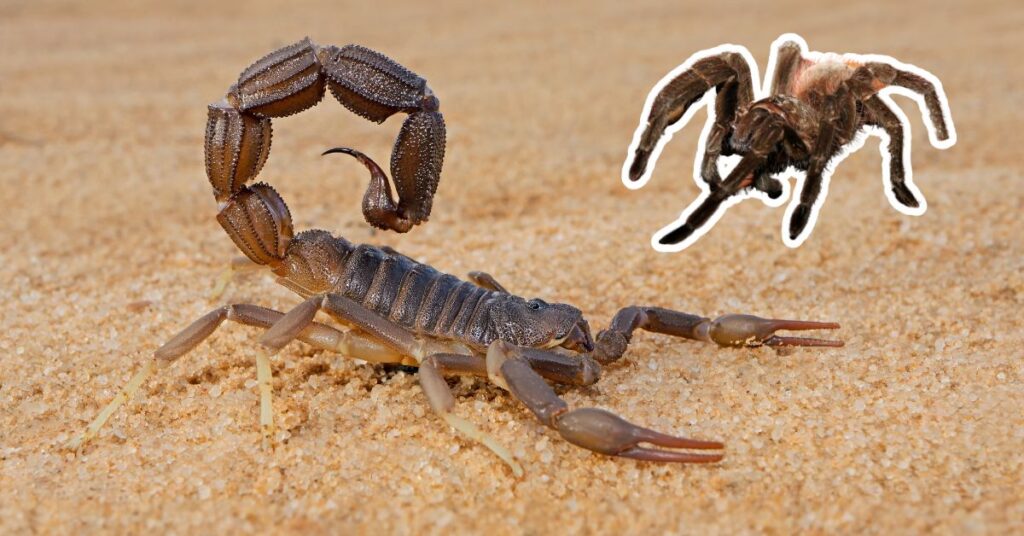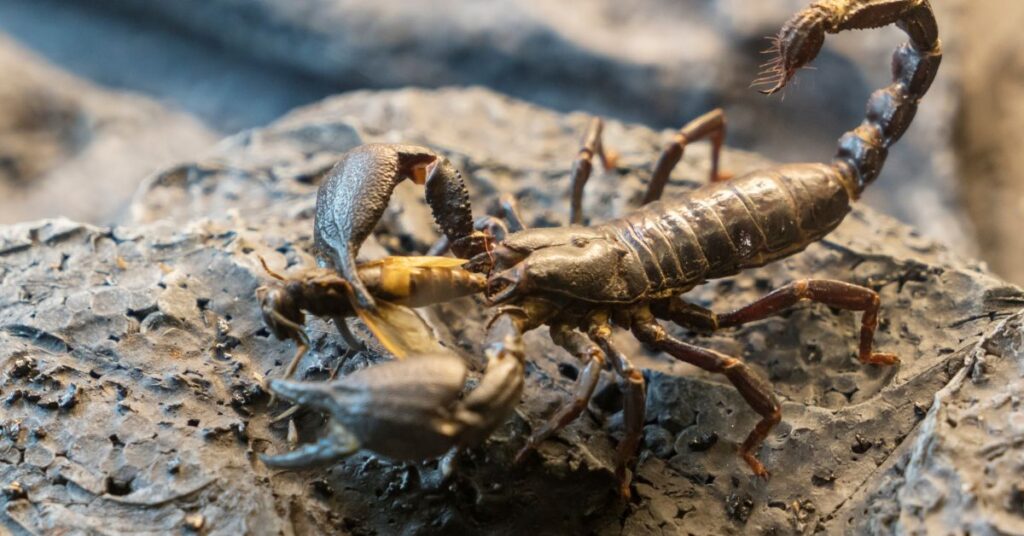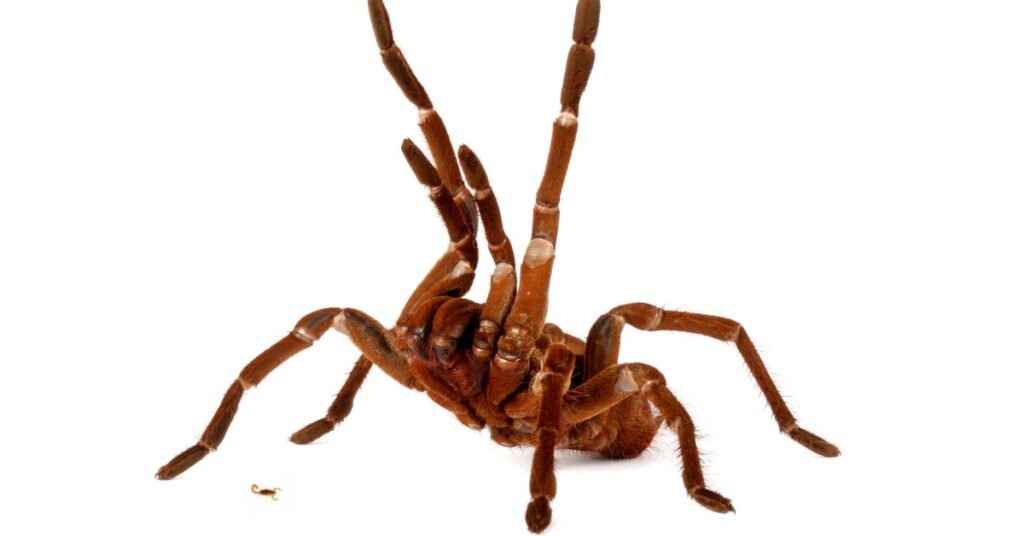
This subject is the topic of mass debate. There are countless YouTube videos, forum posts and even academic studies on this subject but what is the defining answer, do scorpions eat tarantulas?
Unfortunately, it isn’t as simple as a straight yes or no so let’s probe a bit deeper and see what we can unearth.
OK, let’s break that paragraph down a little bit and go into some more detail but before we do, we’ll compare the two arachnids.
Similarities
Both scorpions and tarantulas are arachnids, that being they both possess eight legs.
They also both have two body segments, including the cephalothorax and the abdomen, however with scorpions these two segments are covered in thick armoured plates.
Both start with eggs from which hatch miniature versions of the adults that molt and grow in size.

Their behaviour and habits are also somewhat similar. Both are predatory and obtain nutrition by catching and consuming other animals such as insects.
Differences

The main and obvious difference is that tarantulas have a pair of fangs that they use to inject venom.
Scorpions lack fangs but instead have a stinger to inject venom. This is located at the end of their tail.
Scorpions also have a pair of pinchers which are modified pedipalps. Tarantulas lack pinchers of any kind.
Scorpions lack spinnerets and therefore do not produce silk, whereas spiders do.
Speed
This is the first thing that needs to be taken into consideration. Scorpions can run, on average, 12 mph compared to a tarantula who is capable of running, on average, 60mph.
The tarantula can run much faster; however, they are only capable of keeping up this speed for short periods of time.
Studies have also shown that when a tarantula moves faster, they tend to lose their coordination. They may stumble or appear to move almost in a drunken fashion as flee away.
Whilst tarantulas are lightning fast at sinking their teeth into prey, the death stalker scorpion for example can sting and inject venom at up to 51 inches a second!
Size
Both scorpions and tarantulas come in all sorts of sizes.
The smallest recorded tarantula is the spruce-fir moss spider which is 0.23 inches, and lives in the Southern Appalachian Mountains whereas the largest tarantula is the Goliath Bird Eater with a leg span of 12 inches (one foot).
With regard to scorpions, the smallest scorpion is the Caribbean Microtityus fundorai native to the Dominican Republic, coming in at a mere 0.5 inches long.
On the other end of the scale, we have the Giant Forest Scorpion found in southeast Asia, which can reach sizes of 9 inches.

Obviously, a Caribbean Microtityus fundorai Scorpion is never going to come into contact with a Goliath Bird Eater Tarantula (unless in captivity), the above illustration is for amusement purposes only.
However, in the wild, although scorpions and tarantulas rarely cross paths, if they do meet, they will fight over habitat or food.
Venom
Scorpions inject venom through their tail stingers, while tarantulas inject through their fangs.
If you recall in our initial answer, we said that a larger scorpion would eat a smaller tarantula no problem. This is somewhat true although there are caveats to that.
Whilst scorpion venom is extremely potent to humans, it would appear that some tarantula species may have evolved to help protect them from it, perhaps by detoxifying the scorpion venom in their haemolymph (the spider equivalent of blood).
However, other than venom, scorpions also have grasping pincers to catch and tear prey, which they could use to grab onto the tarantula. The Giant Forest Scorpion could use its powerful pincers to crush a tarantula.
Fortunately, a tarantula can afford to lose a leg in order for it to retreat and the leg will regrow at its next molt.
In general, the smaller the scorpion pincers, the more potent the venom.
For example, deathstalker scorpions have slender pincers, but their potent venom is filled with neurotoxins that overexcite the nervous system, leading to myocardial injury, pulmonary oedema, and cardiogenic shock.
Watch the video below to see a scorpion and tarantula battle it out.
What do you think? Personally, I’d rather deal with a tarantula than a scorpion, but everyone’s different!
